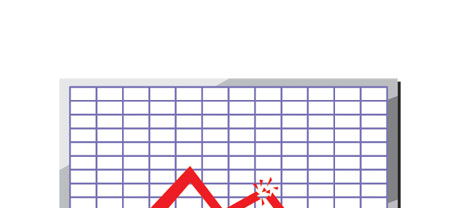For many years there was only one trustworthy solution to keep data on a pc – using a disk drive (HDD). Nonetheless, this sort of technology is presently showing it’s age – hard disks are really noisy and sluggish; they’re power–ravenous and have a tendency to produce a lot of warmth for the duration of serious procedures.
SSD drives, on the contrary, are quick, use up much less power and they are far less hot. They provide an innovative solution to file accessibility and data storage and are years in front of HDDs with regards to file read/write speed, I/O operation as well as energy efficacy. See how HDDs stand up against the newer SSD drives.
1. Access Time
Because of a revolutionary new method to disk drive operation, SSD drives permit for noticeably faster file accessibility rates. Having an SSD, file accessibility instances are far lower (as little as 0.1 millisecond).
The concept powering HDD drives dates all the way to 1954. And even though it has been drastically polished over time, it’s nonetheless no match for the innovative concept powering SSD drives. With today’s HDD drives, the very best data access speed it is possible to achieve varies between 5 and 8 milliseconds.
2. Random I/O Performance
Because of the brand–new radical file storage approach embraced by SSDs, they supply a lot quicker file access speeds and swifter random I/O performance.
In the course of our tests, all of the SSDs showed their capacity to work with at the least 6000 IO’s per second.
During the same trials, the HDD drives turned out to be considerably slower, with only 400 IO operations managed per second. Although this looks like a large number, if you have a hectic server that contains lots of well–known web sites, a slow hard disk drive could lead to slow–loading websites.
3. Reliability
SSD drives are created to have as fewer rotating components as feasible. They use an identical technique to the one used in flash drives and are also more dependable in comparison with common HDD drives.
SSDs offer an normal failing rate of 0.5%.
For an HDD drive to operate, it must rotate two metal disks at more than 7200 rpm, holding them magnetically stable in the air. There is a number of moving elements, motors, magnets and other devices packed in a tiny place. Therefore it’s obvious why the standard rate of failing of any HDD drive ranges somewhere between 2% and 5%.
4. Energy Conservation
SSDs don’t have any moving elements and need hardly any chilling power. They also call for very little power to operate – trials have revealed they can be powered by a regular AA battery.
As a whole, SSDs consume between 2 and 5 watts.
From the second they were developed, HDDs have invariably been very electricity–hungry equipment. And when you’ve got a web server with a bunch of HDD drives, this can boost the monthly electricity bill.
Typically, HDDs take in between 6 and 15 watts.
5. CPU Power
Thanks to SSD drives’ greater I/O efficiency, the key web server CPU will be able to process data file calls more rapidly and conserve time for different operations.
The common I/O wait for SSD drives is 1%.
HDD drives enable slower access speeds rather than SSDs do, resulting for the CPU being required to wait around, although saving assets for your HDD to find and return the demanded file.
The common I/O delay for HDD drives is around 7%.
6.Input/Output Request Times
In the real world, SSDs perform as wonderfully as they did for the duration of the tests. We competed an entire platform back–up on one of our own production machines. During the backup procedure, the normal service time for I/O calls was in fact under 20 ms.
With the same web server, however, this time built with HDDs, the outcome were very different. The standard service time for any I/O request changed in between 400 and 500 ms.
7. Backup Rates
Yet another real–life enhancement is the speed at which the back–up is produced. With SSDs, a server data backup today will take only 6 hours by using MITRIT.com’s hosting server–designed software.
In contrast, on a hosting server with HDD drives, the same back up normally takes three to four times as long in order to complete. A full backup of any HDD–powered web server often takes 20 to 24 hours.
Should you want to at once improve the overall effectiveness of your web sites and never have to modify any code, an SSD–equipped hosting service is really a really good option. Have a look at our Linux cloud hosting packages packages along with our Linux VPS packages – our solutions offer really fast SSD drives and can be found at cheap prices.
Hepsia
- Live Demo
Service guarantees
- Our Virtual Private Servers include no installation rates and work in a reliable network providing 99.9% of uptime. Full root/administrator access warranted.
Compare our prices
- Check out our pricing and select the right Virtual Private Server for your dynamic websites. You’re able to upgrade to a more powerful VPS setup with only a click.
- Compare our hosting plans
Contact Us
- You can easily make contact with us 24 hours by email or by utilizing our super–fast ticketing platform. We provide a 1–hour response time guarantee.















